Abstract
The mycotoxin fusarochromanone, a metabolite of Fusarium fungi, is able to induce tibial dyschondroplasia (TD) in chickens under experimental conditions. On the basis of health surveillance data on TD, two broiler farms with TD prevalence rates of up to 56% were identified. In the corresponding pelleted feed samples, fusarochromanone was detected in all 12 samples analyzed by column purification and TLC, with concentrations 4 to 59 micrograms/kg. No Fusarium fungi were available from the feed because of the pelleting process, but seven Fusarium equiseti strains previously isolated from Danish cereals were checked for fusarochromanone production, and all produced fusarochromanone at 57 to 1,435 mg/kg. Thus, the potential for fusarochromanone production by F. equiseti is considerable. The identification of fusarochromanone from feed and F. equiseti was confirmed by mass, infrared, and nuclear magnetic resonance spectral analyses. This is the first report of fusarochromanone as a naturally occurring contaminant.
Full text
PDF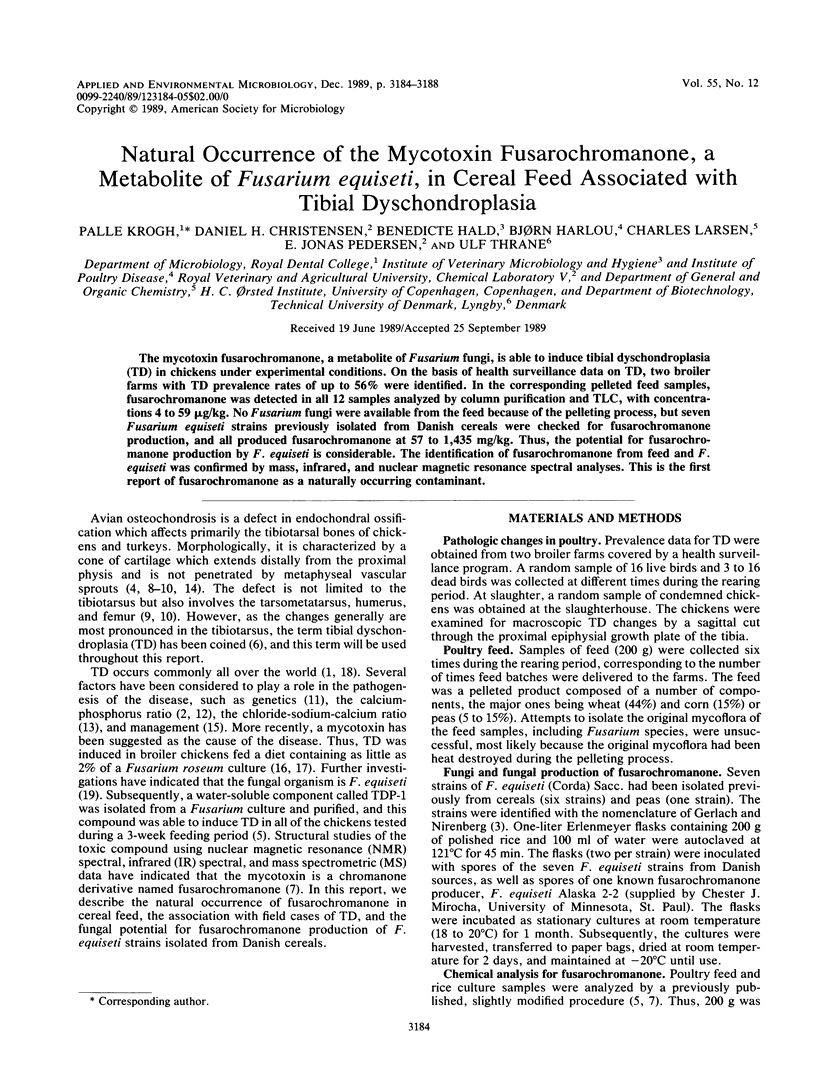
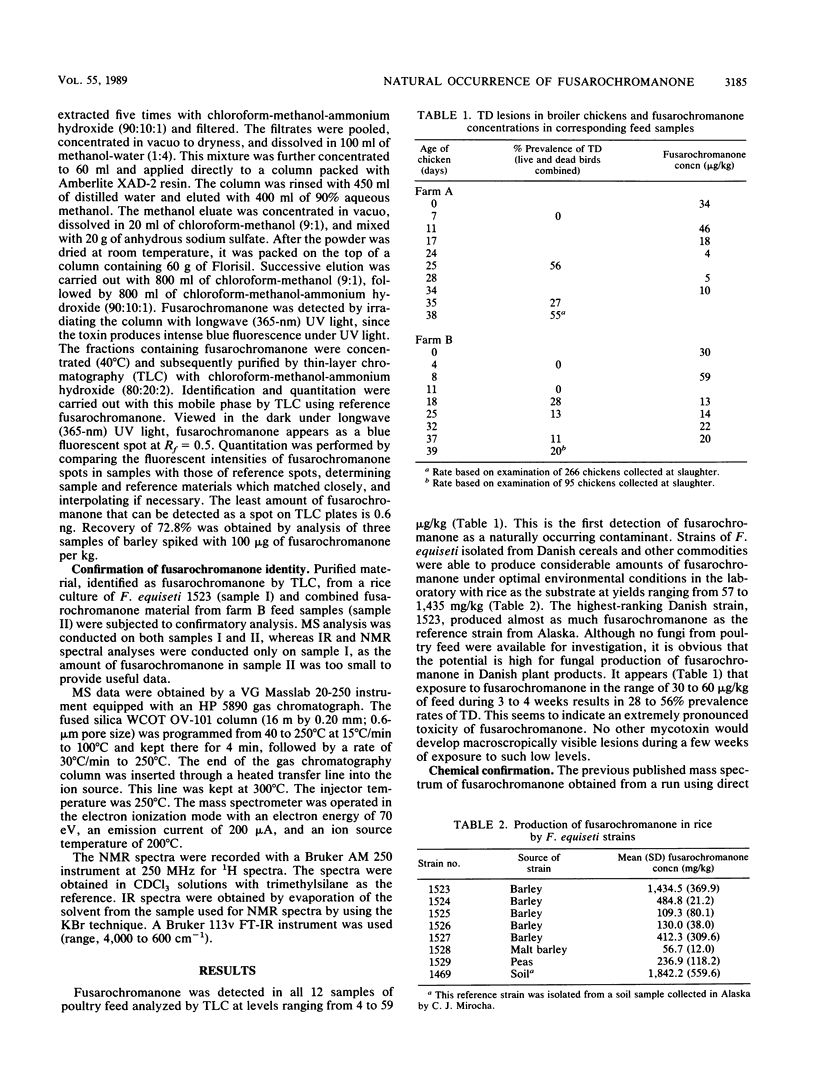
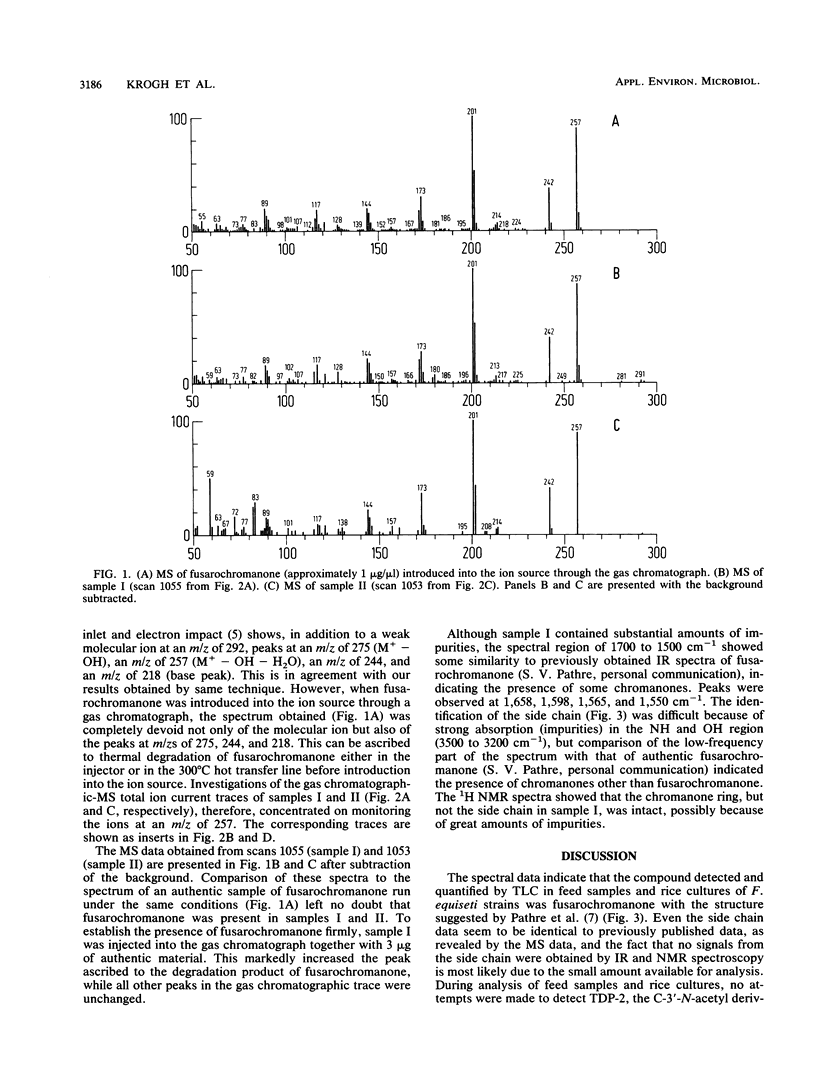
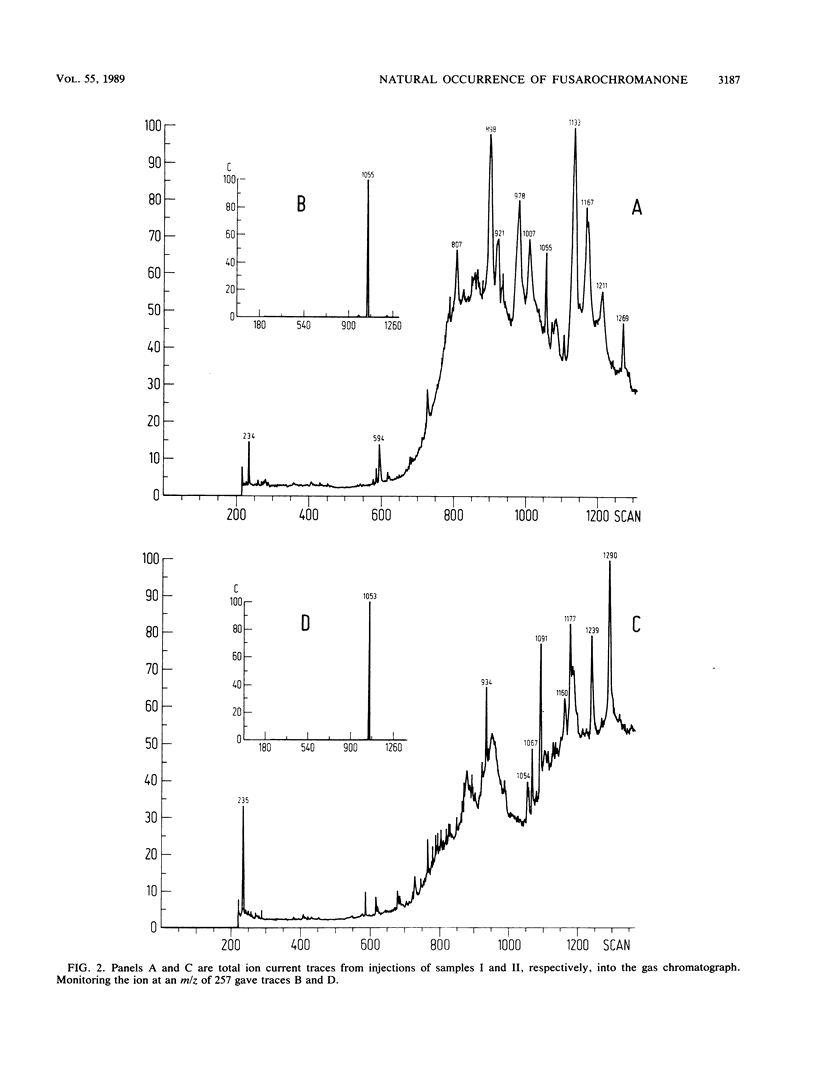
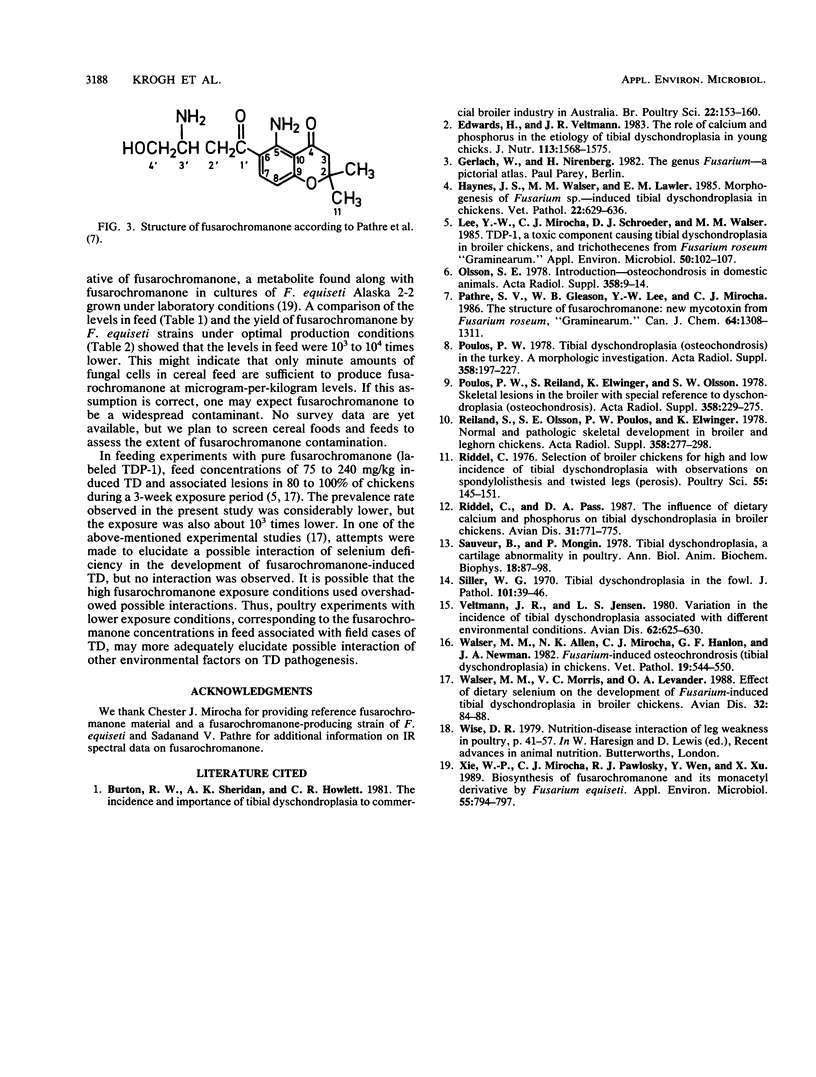
Selected References
These references are in PubMed. This may not be the complete list of references from this article.
- Burton R. W., Sheridan A. K., Howlett C. R. The incidence and importance of tibial dyschondroplasia to the commercial broiler industry in Australia. Br Poult Sci. 1981 Mar;22(2):153–160. doi: 10.1080/00071688108447873. [DOI] [PubMed] [Google Scholar]
- Edwards H. M., Jr, Veltmann J. R., Jr The role of calcium and phosphorus in the etiology of tibial dyschondroplasia in young chicks. J Nutr. 1983 Aug;113(8):1568–1575. doi: 10.1093/jn/113.8.1568. [DOI] [PubMed] [Google Scholar]
- Haynes J. S., Walser M. M., Lawler E. M. Morphogenesis of Fusarium sp-induced tibial dyschondroplasia in chickens. Vet Pathol. 1985 Nov;22(6):629–636. doi: 10.1177/030098588502200619. [DOI] [PubMed] [Google Scholar]
- Lee Y. W., Mirocha C. J., Shroeder D. J., Walser M. M. TDP-1, a toxic component causing tibial dyschondroplasia in broiler chickens, and trichothecenes from Fusarium roseum 'Graminearum'. Appl Environ Microbiol. 1985 Jul;50(1):102–107. doi: 10.1128/aem.50.1.102-107.1985. [DOI] [PMC free article] [PubMed] [Google Scholar]
- Olsson S. E. Osteochondrosis in domestic animals. Introduction. Acta Radiol Suppl. 1978;358:9–14. [PubMed] [Google Scholar]
- Poulos P. W., Jr, Reiland S., Elwinger K., Olsson S. E. Skeletal lesions in the broiler, with special reference to dyschondroplasia (osteochondrosis). Pathology, frequency and clinical significance in two strains of birds on high and low energy feed. Acta Radiol Suppl. 1978;358:229–275. [PubMed] [Google Scholar]
- Poulos P. W., Jr Tibial dyschondroplasia (osteochondrosis) in the turkey. A morphologic investigation. Acta Radiol Suppl. 1978;358:197–227. [PubMed] [Google Scholar]
- Reiland S., Olsson S. E., Poulos P. W., Jr, Elwinger K. Normal and pathologic skeletal development in broiler and leghorn chickens. A comparative investigation. Acta Radiol Suppl. 1978;358:277–298. [PubMed] [Google Scholar]
- Riddel C. Selection of broiler chickens for a high and low incidence of tibial dyschondroplasia with observations on spondylolisthesis and twisted legs (perosis). Poult Sci. 1976 Jan;55(1):145–151. doi: 10.3382/ps.0550145. [DOI] [PubMed] [Google Scholar]
- Riddell C., Pass D. A. The influence of dietary calcium and phosphorus on tibial dyschondroplasia in broiler chickens. Avian Dis. 1987 Oct-Dec;31(4):771–775. [PubMed] [Google Scholar]
- Siller W. G. Tibial dyschondroplasia in the fowl. J Pathol. 1970 May;101(1):39–46. doi: 10.1002/path.1711010105. [DOI] [PubMed] [Google Scholar]
- Veltmann J. R., Jr, Jensen L. S. Variations in the incidence of tibial dyschondroplasia associated with different environmental conditions. Avian Dis. 1980 Jul-Sep;24(3):625–630. [PubMed] [Google Scholar]
- Walser M. M., Allen N. K., Mirocha C. J., Hanlon G. F., Newman J. A. Fusarium-induced osteochondrosis (tibial dyschondroplasia) in chickens. Vet Pathol. 1982 Sep;19(5):544–550. doi: 10.1177/030098588201900509. [DOI] [PubMed] [Google Scholar]
- Walser M. M., Morris V. C., Levander O. A. Effect of dietary selenium on the development of Fusarium-induced tibial dyschondroplasia in broiler chickens. Avian Dis. 1988 Jan-Mar;32(1):84–88. [PubMed] [Google Scholar]
- Xie W. P., Mirocha C. J., Pawlosky R. J., Wen Y. C., Xu X. G. Biosynthesis of fusarochromanone and its monoacetyl derivative by Fusarium equiseti. Appl Environ Microbiol. 1989 Apr;55(4):794–797. doi: 10.1128/aem.55.4.794-797.1989. [DOI] [PMC free article] [PubMed] [Google Scholar]


